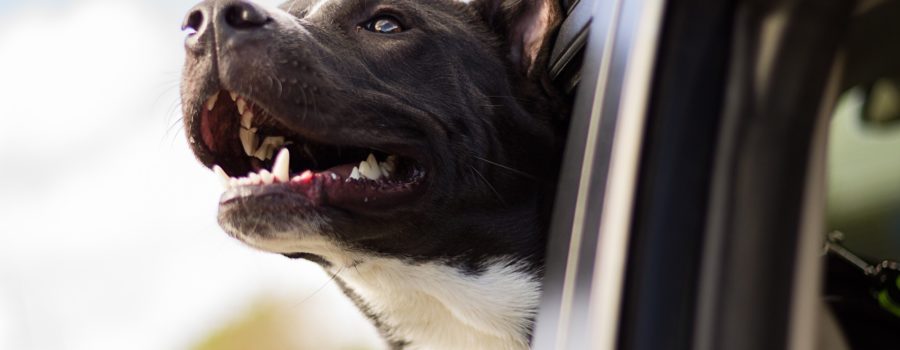Periodontal disease is one of the most prevalent afflictions in human and veterinary medicine. Most pets have developed some degree of periodontal disease by the time they are three years old. Periodontal disease, or severe decay of the gums and teeth, is found in 80% of dogs over the age of 3, and in 70% of cats over 3. One reason for this is likely that less than 1% of pet owners regularly brush their pet’s teeth. If you happen to fall into that other 99%, we hope that the following article will offer some convincing motivation to begin brushing your pet’s teeth. If you have already tried brushing and found it difficult, skip to our next article on how to acclimate your pet to having her teeth cleaned.
Periodontal disease occurs in pets when bacteria is overabundant and spreads over an animal’s teeth and, in particular, underneath the gum line. As it multiplies, bacteria forms into a dangerous substance called plaque which sticks to the teeth and gums. When this plaque begins forming beneath the gum line, it erodes not only the gums, but the teeth themselves and the structures which keep teeth in place.
When plaque is left untreated, teeth begin to decay and lose their structural integrity and the gum line can become inflamed and quite painful. It is not uncommon for patients with bad periodontal disease to experience bone decay in their jaw and in the part of the oral cavity which separates the mouth from the nose. In severe cases, this can lead to fractured jawbones and painful nasal problems. Even worse, the blood vessels connecting to the teeth also lead directly to the heart, kidney, and liver and can cause these organs to become infected themselves.
Perhaps the most important facet of periodontal disease to understand is that the plaque underneath the gum line of an animal isn’t visible to the naked eye, and it is this plaque which can cause the most harm. So, even if your pet’s teeth look bright, shiny, and clean, they could very well still be experiencing dental disease.
The only reliable way to keep your pet safe from periodontal disease is a combination of regular brushing and regular veterinary dental cleanings. Every routine examination with a veterinarian should include a thorough examination of the teeth. However, as we’ve said, even a veterinarian can’t see beneath the gum line—the most important area to protect. For this reason, dental procedures which allow doctors to take X-rays are the only way to detect and diagnose problems. Full dental cleanings (known as COHATs—Comprehensive Oral Health Assessment and Treatment) require general anesthesia and are somewhat costly.
In order to minimize the need for frequent COHATs, daily brushing and good oral hygiene are crucial. The duration, complexity, and cost of these procedures can be greatly diminished by regular brushing. Without daily at-home brushing, periodontal disease can progress far enough in the year between annual dental cleanings to cause serious problems and necessitate tooth extractions. Each tooth that needs to be removed from a pet’s mouth significantly increases the time and cost of a dental procedure, so it is truly in everyone’s interest to practice assiduous brushing habits. Regular brushing will help remove bacteria and plaque from the teeth before it becomes tartar. Brushing also helps maintain a healthy and robust gum line that will be less prone to infection.
Here’s some good news: teaching your pet to let you brush her teeth isn’t as difficult as it sounds. Given the right techniques, some patience, and good dental hygiene products, brushing your pet’s teeth can become an easy part of your daily routine. For a detailed walkthrough of good brushing technique, see our companion article on tooth brushing!
More and more locations are beginning to offer and advertise non-anesthetic dental cleanings. You can think of a good non-anesthetic cleaning as a tune-up for your pet in between full anesthetic cleanings. The key word here is good. When done well, non-anesthetic cleanings involve highly trained technicians working under the supervision of a veterinarian on dogs who have been pre-screened and deemed viable non-anesthetic candidates. These cleanings are more thorough than an at-home brushing and can help ensure that a pet’s teeth remain healthy between full dental cleanings. One of the chief criteria for being a suitable non-anesthetic patient is having had a full anesthetized dental procedure within the last year. Anesthesia is the only way to get an accurate picture of what is underneath a pet’s gum line, and you can seriously jeopardize your pet’s health if you believe that non-anesthetic cleanings are as good as full dental cleanings. Non-anesthetic dentals should never be used as a replacement for a fully anesthetized cleaning and should always be done under direct veterinary supervision. Procedures offered in pet stores and groomers without a veterinarian present are often ineffective and may even be dangerous for your pet.
We hope this article has made you think more seriously about your pet’s oral hygiene. Please feel free to contact us with any comments or feedback you have, and please see our companion article on how to brush your pet’s teeth!




